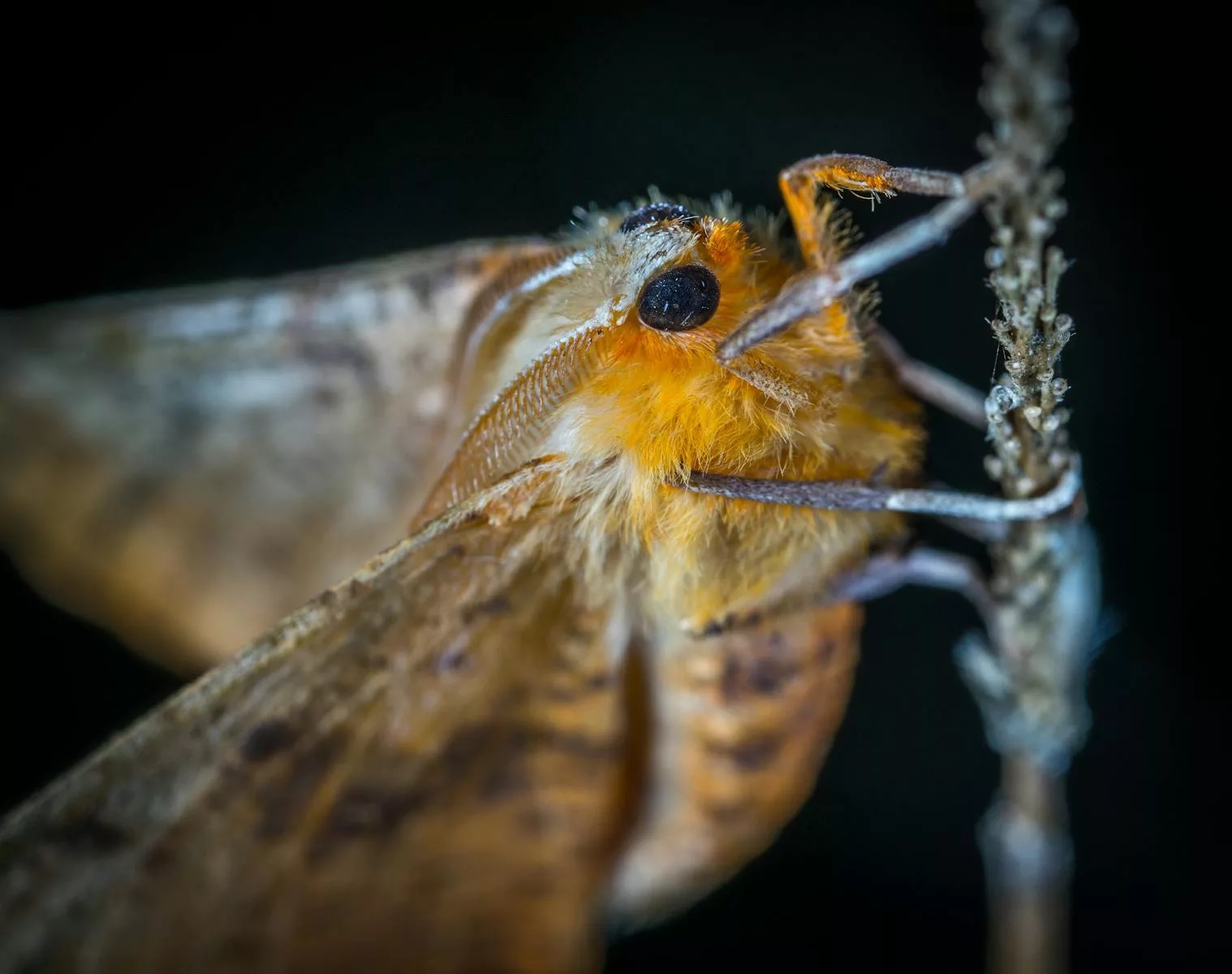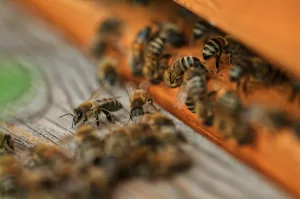Insects are the most diverse and numerous group of animals on Earth, with over a million identified species and many more yet to be discovered. Despite their small size, they play crucial roles in ecosystems, from pollinating crops to breaking down organic matter. Some insects exhibit truly mind-blowing abilities that challenge our understanding of biology, survival, and evolution. From lifting hundreds of times their body weight to manipulating light with their exoskeletons, insects have adapted in extraordinary ways to survive and thrive in every corner of the planet. Here are 15 unbelievable facts about insects that will forever change the way you see these tiny creatures.
1. Insects Make Up the Majority of Animal Life on Earth
Insects account for around 80% of all known animal species. Their numbers are so vast that for every human on Earth, there are an estimated 200 million insects. From the smallest parasitic wasp to the largest beetles, insects dominate nearly every habitat, from rainforests to deserts, and even the deep ocean. Their adaptability allows them to colonize extreme environments, including the Arctic, underground caves, and high-altitude mountain peaks. Scientists believe that millions of insect species remain undiscovered, many of which may hold secrets to new medicines, biomimetic technologies, and ecological solutions.
2. The Loudest Insect Is as Noisy as a Rock Concert
The male cicada produces a deafening call that can reach up to 120 decibels—comparable to a chainsaw or a rock concert. These insects use their specialized tymbals, ribbed membranes on their abdomens, to produce sound. Some species synchronize their calls, creating an overwhelming chorus that can be heard for miles. Cicadas emerge in massive numbers, often after spending years underground, making their mating season a spectacular and deafening natural phenomenon. In some cultures, their loud songs are considered omens of seasonal change, while in others, they are a delicacy enjoyed as a protein-rich snack.
3. Dragonflies Are the Most Efficient Predators in the Animal Kingdom
Dragonflies have an incredible hunting success rate of around 95%, making them the most efficient predators on the planet. Their highly developed eyesight, which consists of nearly 30,000 lenses per eye, allows them to track prey with unmatched precision. Their wings operate independently, enabling them to hover, dart, and snatch prey midair with extraordinary agility. Unlike other predators that rely on sheer numbers or brute strength, dragonflies rely on precise calculations and lightning-fast reflexes to capture their food. Scientists study their neural pathways to improve robotics and artificial intelligence in tracking technology.
4. Some Insects Can Survive Being Frozen Solid
Tardigrades are often credited with extreme survival skills, but certain insects, such as the Arctic woolly bear caterpillar, can also survive freezing temperatures. These caterpillars produce antifreeze proteins that prevent ice crystals from forming in their cells. They can remain frozen for years, only to thaw and continue their lifecycle when temperatures rise. Incredibly, some of these insects undergo this freezing and thawing process multiple times before finally metamorphosing into moths. This ability has inspired cryogenic research, as scientists look for ways to preserve human organs for transplantation using similar biological antifreeze mechanisms.
5. Termites Build Air-Conditioned Skyscrapers
Termite mounds, found primarily in Africa and Australia, can reach heights of over 30 feet. These towering structures are meticulously engineered with ventilation systems that regulate temperature and humidity. Some termite colonies consist of millions of individuals working in a highly organized society to maintain their home. The design of termite mounds has inspired architects and engineers to develop energy-efficient buildings that regulate internal temperatures without relying on air conditioning, potentially revolutionizing sustainable architecture.
6. Insects Have Been to Space
Fruit flies were the first animals sent into space in 1947. NASA and other space agencies have studied insects in microgravity to understand how life functions beyond Earth. Cockroaches have even been tested in zero gravity, demonstrating their resilience by surviving exposure to space-like conditions. Researchers have also studied how bees and ants behave in microgravity, providing valuable insights into how swarming and collective decision-making may be affected in extraterrestrial environments. These studies could inform how humans sustain life on long-term space missions.
7. A Single Colony of Army Ants Can Contain Over 20 Million Individuals
Army ants, known for their aggressive swarming behavior, can form massive colonies that march through jungles in search of food. They don’t build permanent nests; instead, they create temporary bivouacs by linking their bodies together. These relentless hunters can consume tens of thousands of prey items in a single day. The efficiency and coordination of their raids have fascinated biologists, who study army ant behavior to improve algorithms in logistics, robotics, and even computer networking.
8. Some Insects Produce Antimicrobial Secretions
Cockroaches, often viewed as filthy pests, possess immune systems capable of killing harmful bacteria. Studies have shown that their brains produce antimicrobial compounds that are effective against antibiotic-resistant bacteria. Researchers are exploring these compounds for potential use in developing new medicines. Ants also produce antibiotic substances to protect their colonies from infection, which has sparked interest in studying these natural defenses to combat drug-resistant pathogens.
9. Fireflies Use Bioluminescence to Communicate and Attract Mates
Fireflies create mesmerizing light displays using bioluminescence, a chemical reaction within their bodies. Different species have unique flash patterns, helping them recognize potential mates. Scientists are also studying firefly bioluminescence to improve medical imaging and bioengineering applications, including designing glowing biomarkers that could help detect cancerous cells more easily.
10. The Hercules Beetle Can Lift 850 Times Its Body Weight
The Hercules beetle, one of the largest beetles in the world, is an absolute powerhouse. It can carry objects 850 times its own weight, making it one of the strongest creatures on Earth relative to its size. This strength allows the beetle to compete with rivals and move through its forest environment with ease. Engineers have studied its exoskeleton to develop new materials that mimic its incredible toughness, potentially leading to stronger and more lightweight construction materials.
11. Bees Recognize Human Faces
Despite their tiny brains, bees have an impressive ability to recognize and remember human faces. Research has shown that bees can learn to associate specific facial features with rewards, much like humans use facial recognition. This cognitive ability highlights the complexity of insect intelligence. Scientists believe that studying how bees process visual information could lead to advancements in artificial intelligence and facial recognition software.
12. Some Butterflies Drink Blood and Tears
While most butterflies feed on nectar, certain species, like the salt-loving Julia butterfly, have been observed drinking the tears of crocodiles and other animals. Some butterflies even seek out carrion and open wounds to extract nutrients such as sodium, which is scarce in their typical diet. This behavior, known as “puddling,” helps butterflies obtain essential minerals necessary for reproduction and survival. Scientists studying this phenomenon believe it provides valuable insight into insect adaptation and nutrient acquisition in extreme conditions.
13. The Oldest Known Insect Fossil Is Over 400 Million Years Old
Fossils of early insects date back over 400 million years, making them one of the oldest groups of animals still alive today. Ancient insects coexisted with early land plants and evolved alongside dinosaurs, surviving multiple mass extinctions that wiped out much of life on Earth. Some prehistoric insects, such as giant dragonflies with wingspans of over two feet, were far larger than their modern relatives. Their resilience through Earth’s turbulent history highlights their extraordinary ability to adapt and thrive over millennia.
14. Ants Have Zombie-Like Slaves
Certain parasitic fungi, such as Ophiocordyceps, infect ants and manipulate their behavior. The infected ants are compelled to climb vegetation and anchor themselves in place before the fungus consumes their body and sprouts spores to infect new hosts. This mind-controlling fungus has fascinated scientists studying parasite-host relationships. Some researchers believe understanding how these fungi control insect behavior could lead to breakthroughs in neuroscience and disease treatment in humans.
15. Some Insects Have Metallic, Jewel-Like Exoskeletons
The dazzling colors of beetles like the scarab and jewel beetle come from microscopic structures in their exoskeletons that manipulate light, rather than from pigments. These iridescent exoskeletons help them blend into their environment and may also play a role in communication and mating. Scientists have studied this structural coloration to develop new materials for anti-counterfeiting technology, sustainable paints, and even advanced camouflage applications in the military.
Conclusion
Insects are far more fascinating and complex than most people realize. From their astonishing survival strategies to their unexpected intelligence, these tiny creatures shape ecosystems, inspire scientific discoveries, and even hold secrets that could benefit humanity. Whether we see them as pests, pollinators, or pioneers of evolution, insects deserve our attention and respect for their incredible abilities. As we continue to study them, there’s no doubt that insects will continue to surprise us with new and unbelievable facts. Their resilience, adaptability, and complex behaviors offer valuable lessons for science, technology, and even our understanding of life itself. The more we learn about insects, the more we realize how interconnected they are with our world—and how much we still have to discover.




